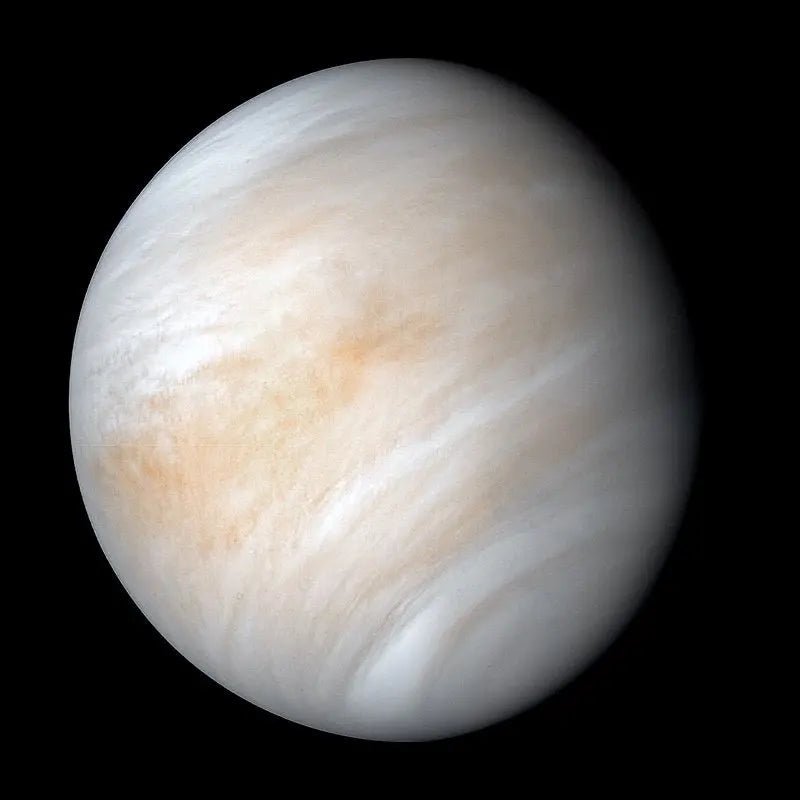Introduction
Venus, the second planet from the Sun, has long captivated the human imagination. Often referred to as Earth's "twin sister," Venus is similar in size, composition, and proximity to the Sun. However, the resemblance ends there. Venus is a world of extremes, with a thick, toxic atmosphere and surface temperatures hot enough to melt lead. This article delves into the fascinating aspects of Venus, from its geological features to its role in the search for extraterrestrial life.
Physical Characteristics
Venus is roughly the same size as Earth, with a diameter of about 12,104 kilometers. It has a dense atmosphere primarily composed of carbon dioxide, with clouds of sulfuric acid. This thick atmosphere acts like a blanket, trapping heat through a runaway greenhouse effect. As a result, Venus is the hottest planet in our solar system, with surface temperatures averaging around 900 degrees Fahrenheit (475 degrees Celsius).
Geological Features
Venus is a geologically active planet, featuring mountains, valleys, and vast plains. One of its most prominent features is the Maxwell Montes, a mountain range taller than the Himalayas. The planet also has more volcanoes than any other in the solar system, although it's still unclear whether they are currently active. Venus lacks tectonic plates, which means it doesn't experience earthquakes like Earth. Instead, it undergoes a process called "subduction," where the crust sinks into the mantle.
The Venusian Atmosphere
The atmosphere of Venus is one of its most intriguing aspects. It is so thick that it creates a surface pressure 92 times greater than Earth's. This pressure is equivalent to being about 900 meters underwater on Earth. The atmosphere also contains trace amounts of water vapor, which has led scientists to speculate about the planet's past. Some theories suggest that Venus might have once had oceans and possibly even conditions suitable for life.
Exploration and Research
Venus has been a subject of interest for space agencies around the world. The Soviet Union's Venera program in the 1960s and 1970s was the first to send spacecraft to Venus, providing invaluable data about its atmosphere and surface. NASA's Magellan mission in the 1990s mapped 98% of the planet's surface. More recently, missions like the European Space Agency's Venus Express have focused on studying its atmosphere and weather patterns.
The Search for Life
While Venus is currently inhospitable, the question of life—either past or present—remains tantalizing. In 2020, scientists detected phosphine gas in the Venusian atmosphere, a molecule associated with biological activity on Earth. However, subsequent studies have offered alternative explanations, and the debate continues. Future missions, such as NASA's upcoming VERITAS and DAVINCI+ missions, aim to gather more data to resolve this question.
Cultural Impact
Venus has also left its mark on human culture. Named after the Roman goddess of love and beauty, it is the brightest natural object in the night sky after the Moon. Its appearance as both the "Morning Star" and the "Evening Star" has inspired poets, artists, and astronomers alike.
Conclusion
Venus is a planet of paradoxes. It is Earth-like in many ways yet profoundly different in others. Its extreme conditions and mysterious history make it a compelling subject for scientific research and a cautionary tale for the potential consequences of a runaway greenhouse effect. As technology advances, our understanding of this enigmatic planet continues to grow, keeping Venus at the forefront of planetary science and exploration.
By delving deeper into the mysteries of Venus, we not only expand our knowledge of the solar system but also gain insights that could be crucial for understanding the future of our own planet.

